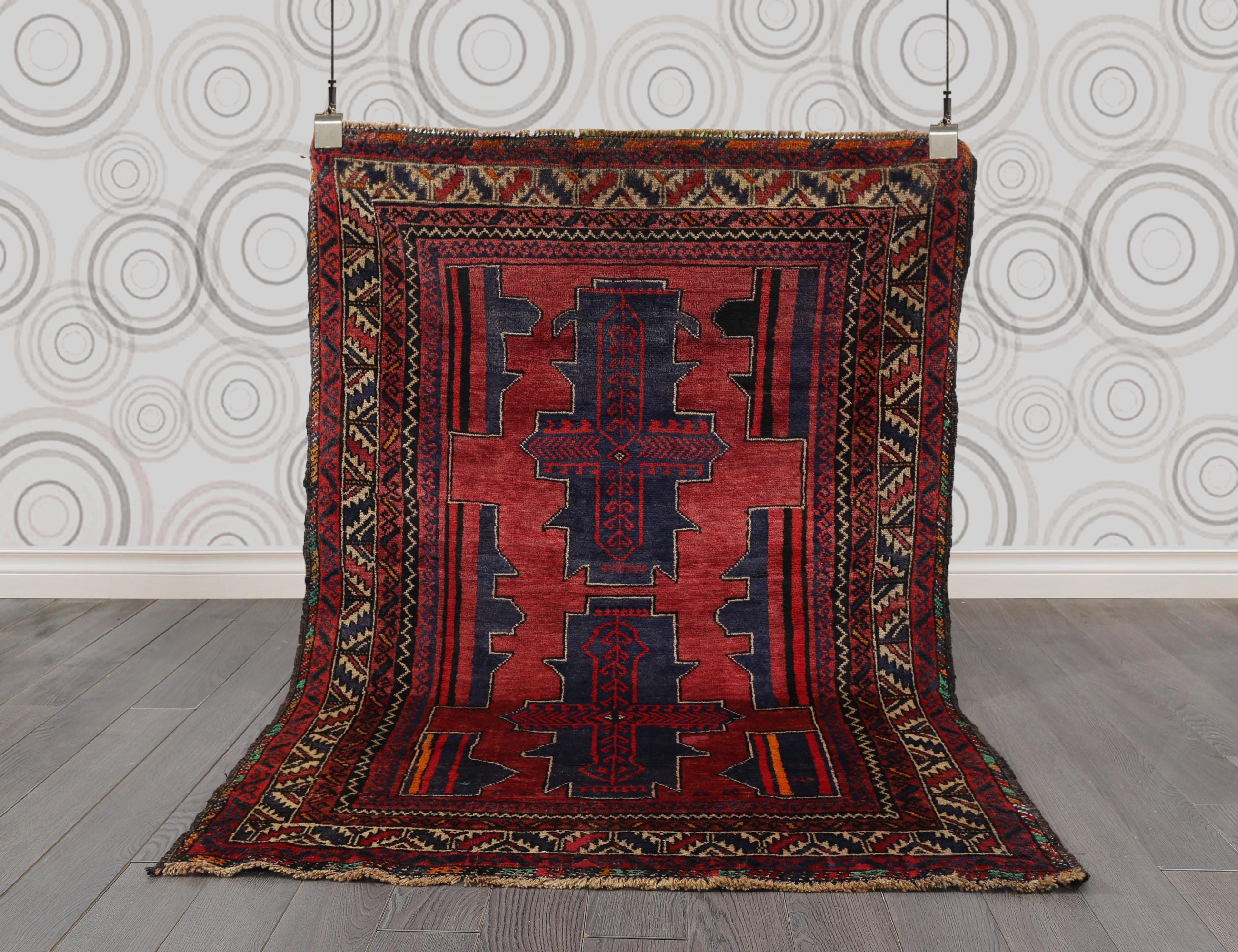
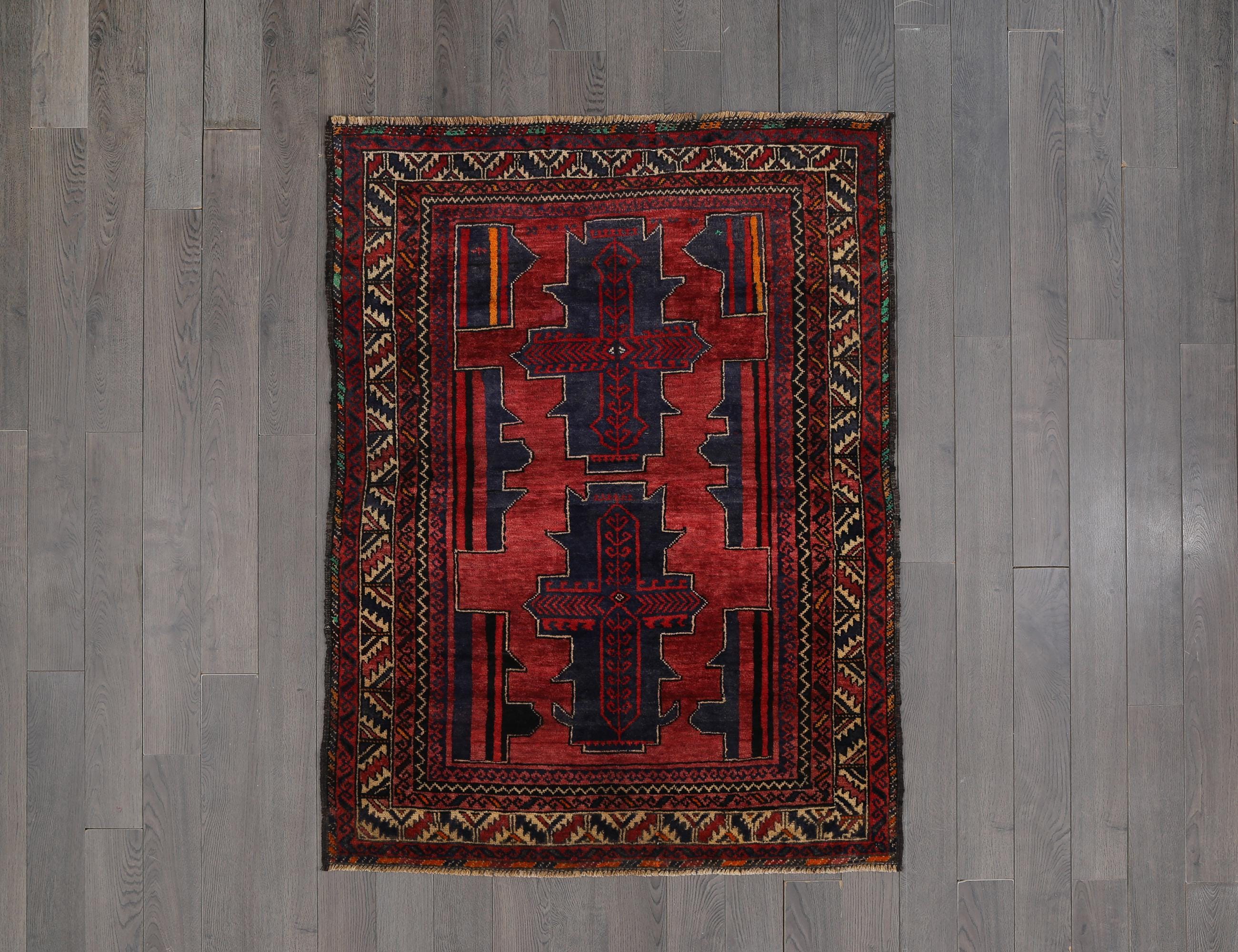
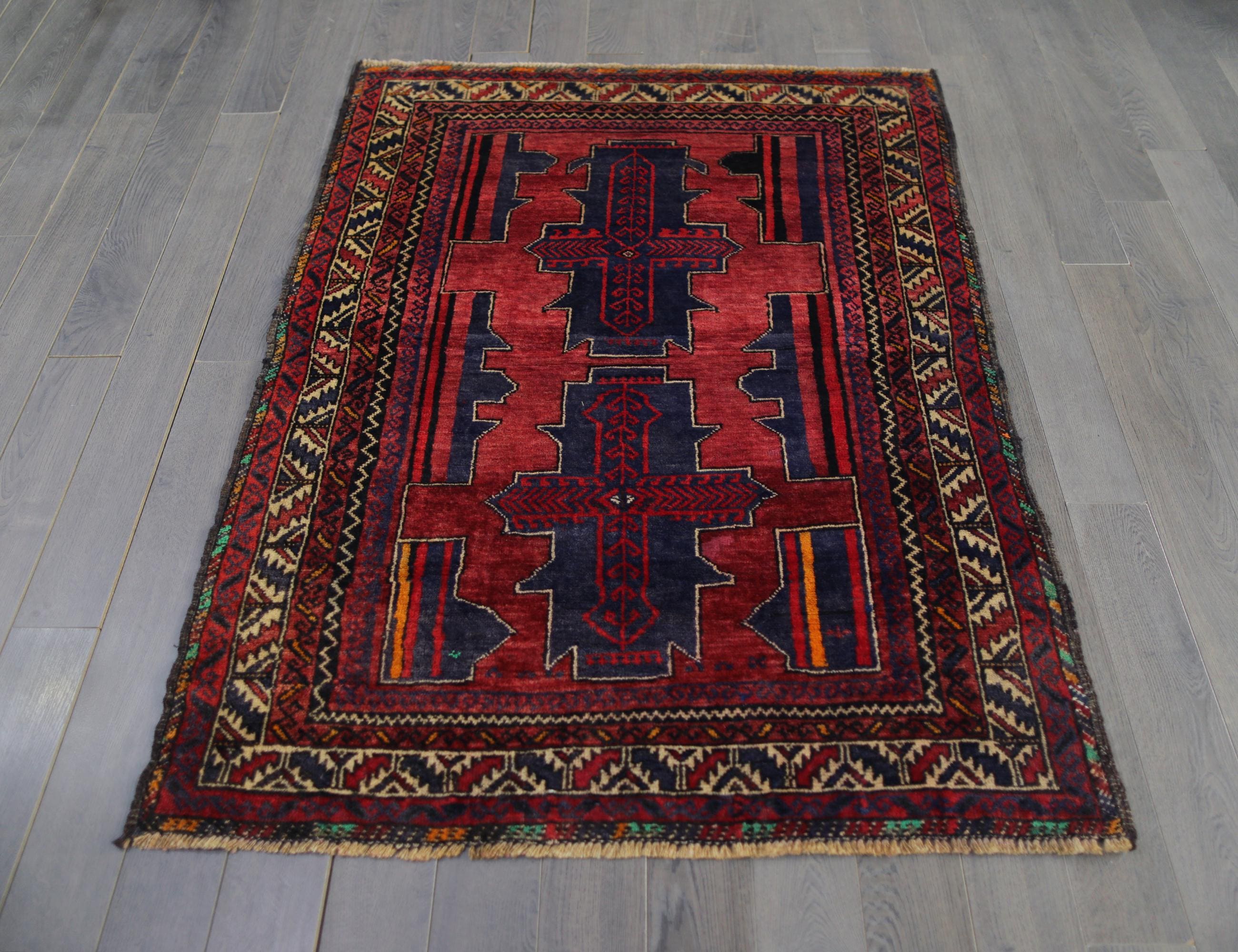
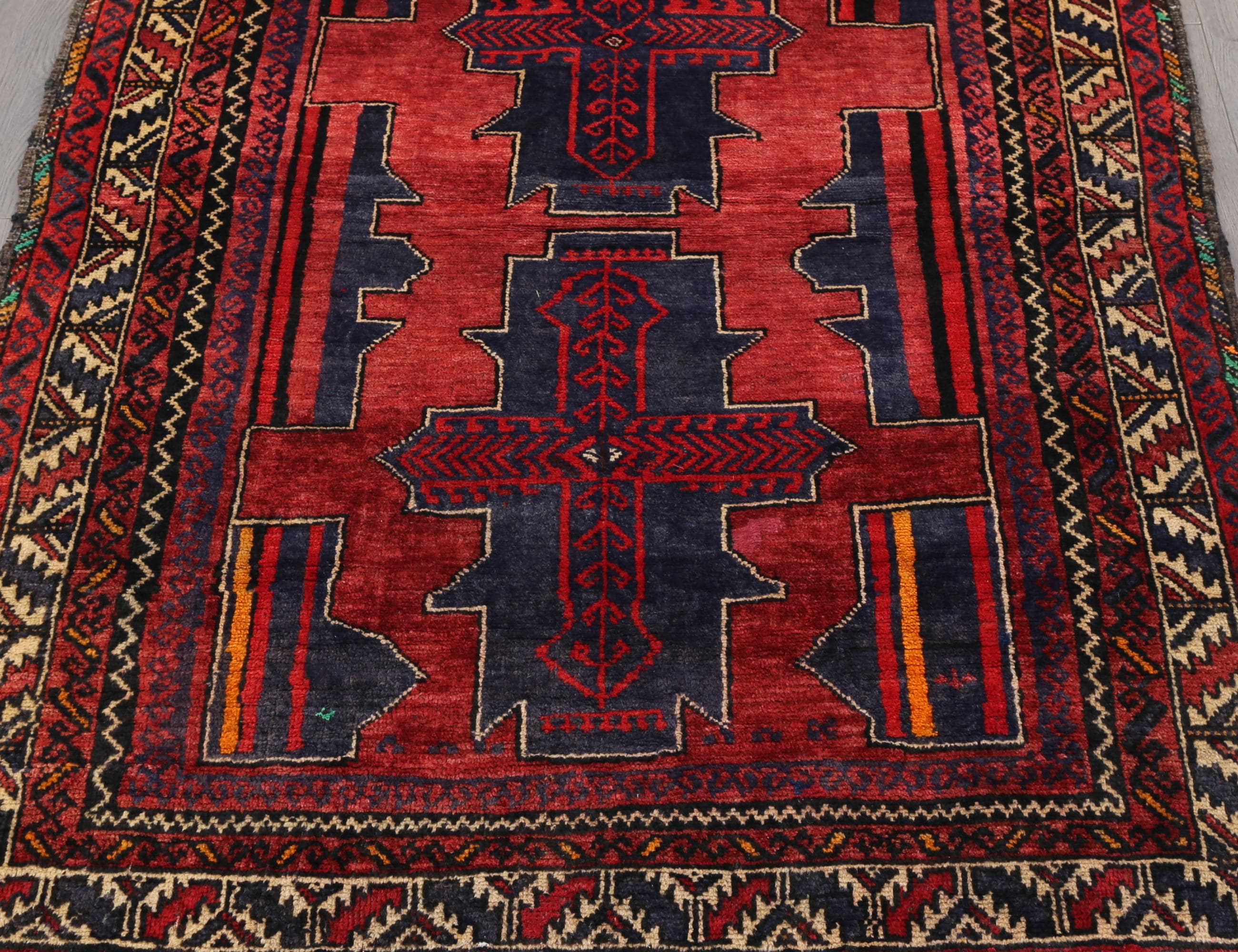

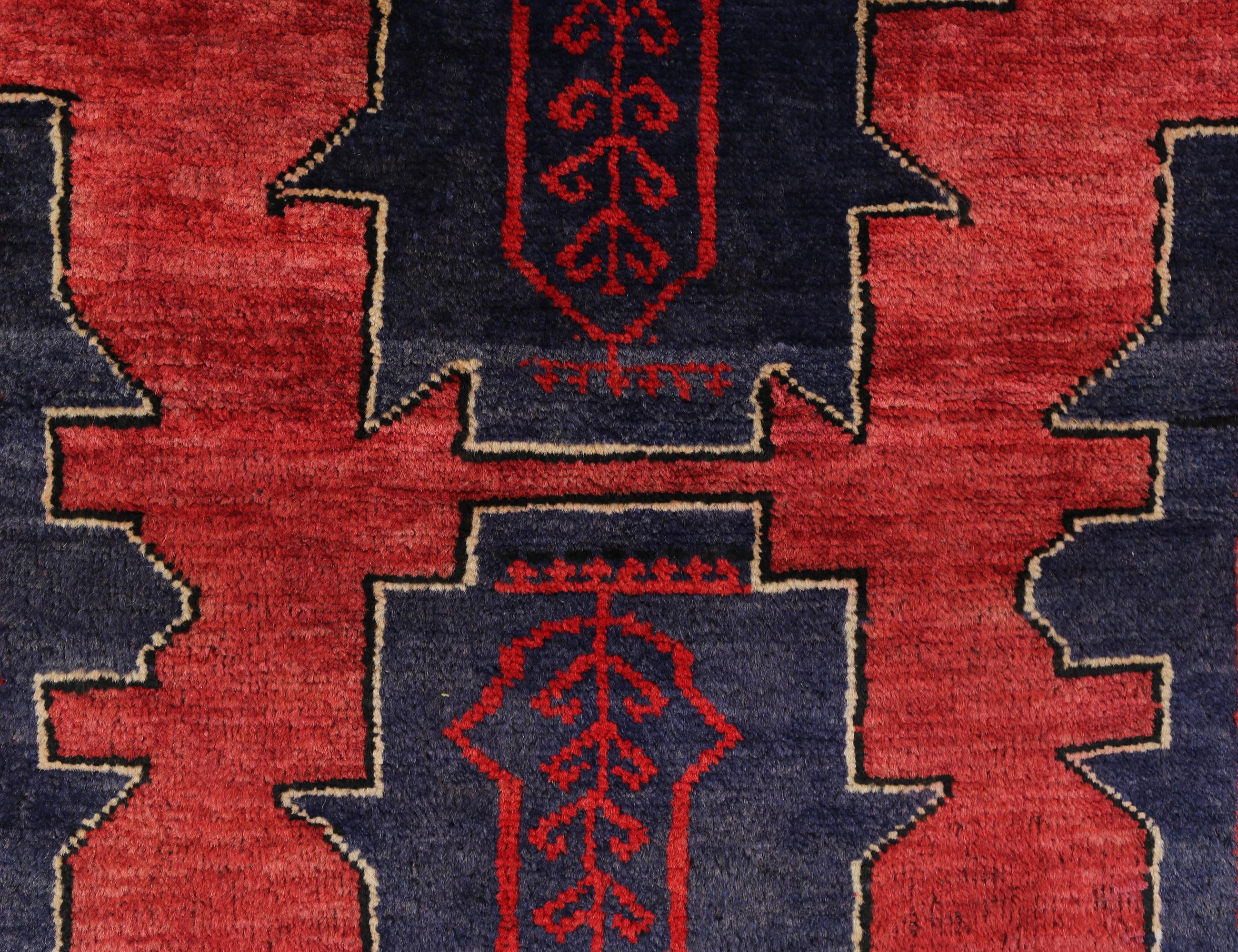
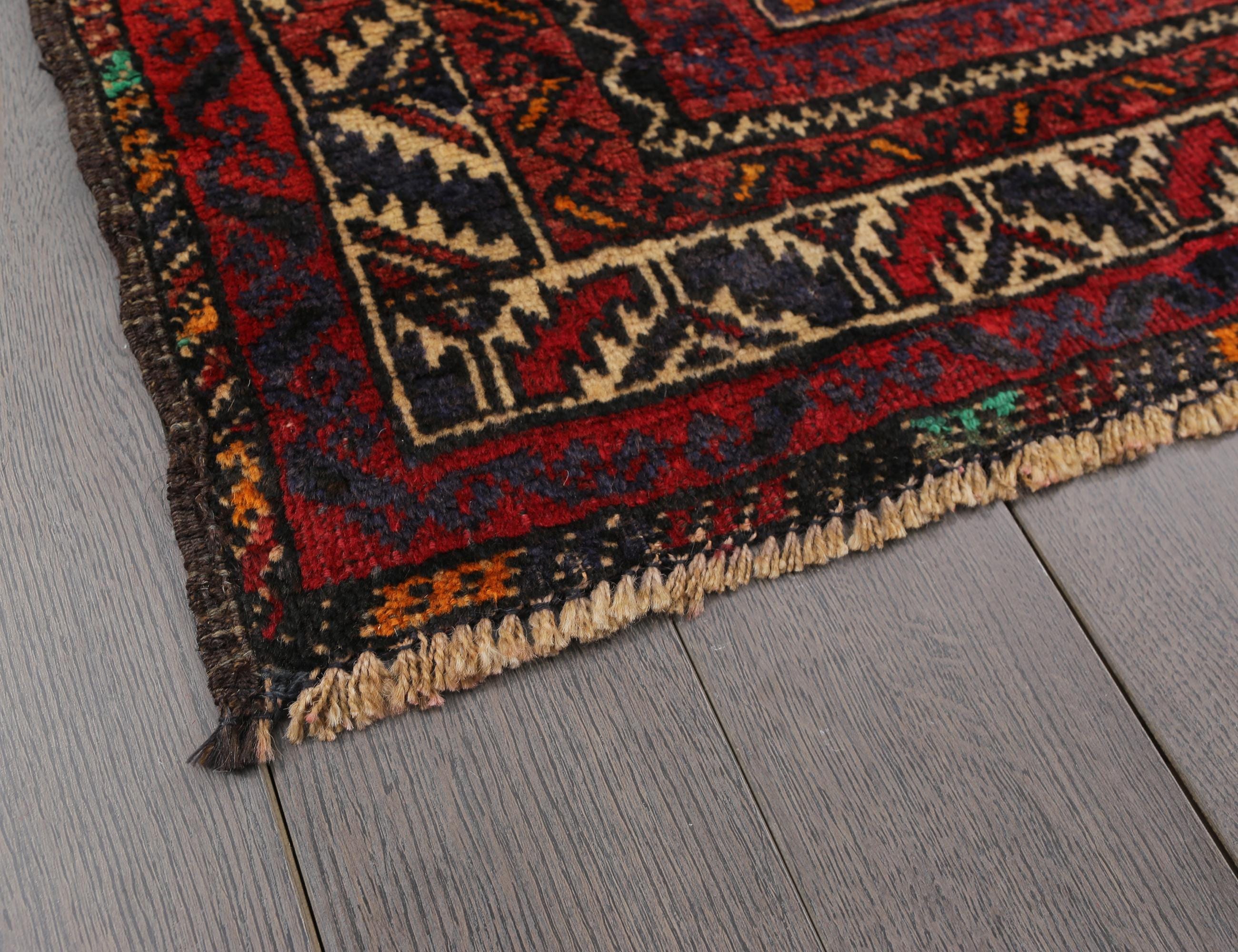
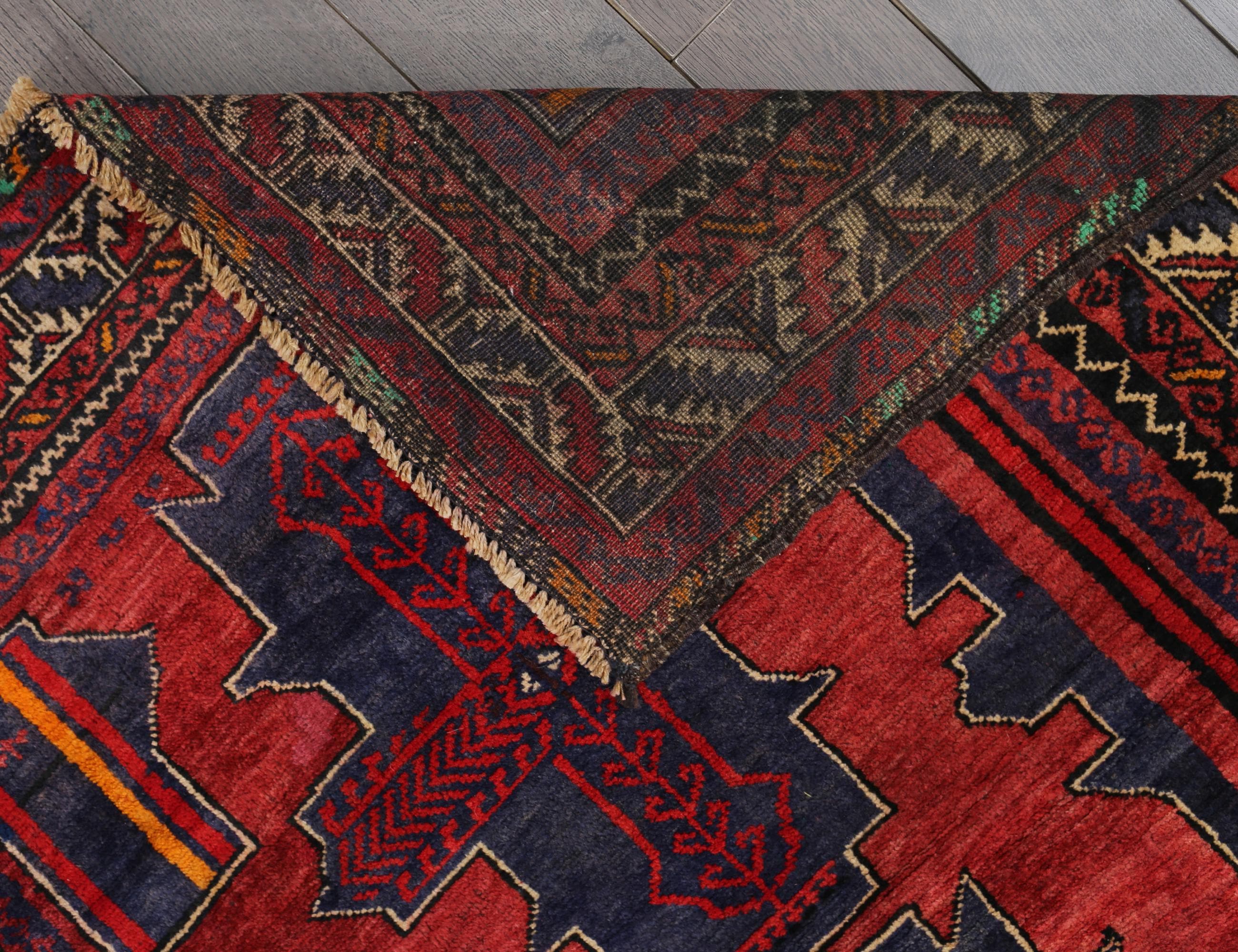
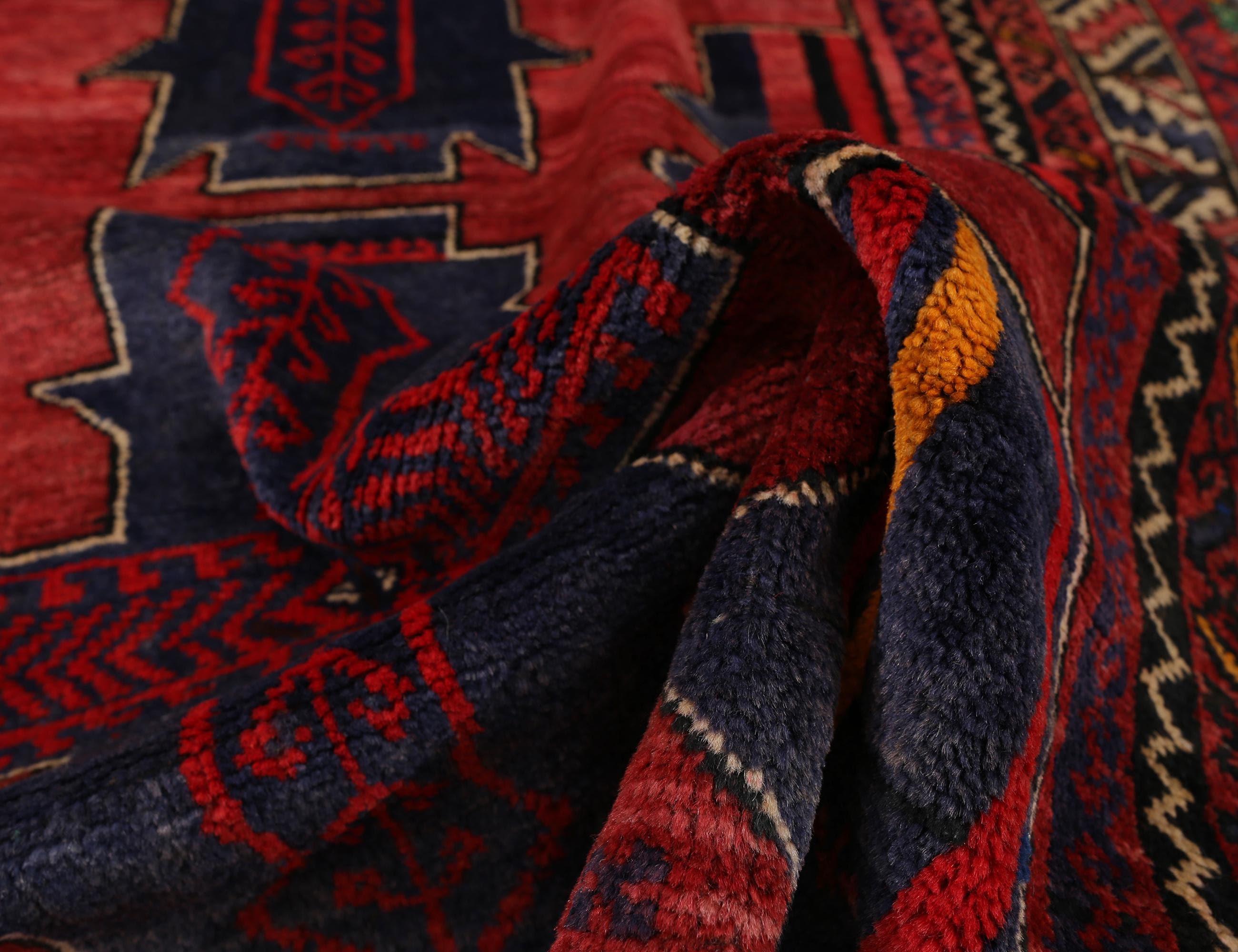
Vintage Afghan Baluch Rug – Hand-Knotted Wool, Geometric Medallions
$480.00 $1,200.00
Collected from a small village weaving tradition on the Afghan side of the Baluch cultural area, this hand-knotted rug showcases bold, totem-like geometric medallions in deep madder red and midnight indigo framed by serrated leaf borders. It’s a soulful, all-wool piece with beautiful abrash (natural shade variation) and the plush handle that only handspun wool can give.
Weaving tradition:
The structure, palette and drawing place this firmly in the Baluch/Timuri tribal tradition of western Afghanistan (Herat–Farah belt). The triple cruciform “totem” medallions, multiple striped guard borders and the serrated leaf main border are hallmark elements of this group.
Knot structure :
Back photos show offset rows with slightly diagonal knot “peaks” and a supple, flexible handle—consistent with asymmetrical (Senneh-type) knots, most often open-left in Baluch work.
Regional origin :
The saturated indigo field, oxidized madder reds, touches of bottle green and pumpkin orange, plus dark brown selvedges and wool fringe are typical of north-west Afghan Baluch pieces.
Age period :
Even, honest surface wear, softened reds, and minor end fraying indicate a late-20th-century village weave (c. 1975–1995).
Distinctive regional traits:
Triple cruciform / totem medallions with small leaf sprigs in red—motifs common among Timuri-Baluch weavers.
Serrated leaf & calyx main border and reciprocal zig-zag guards.
Dark goat-brown overcast selvedges.
Pile & density :
Medium pile, approx. 6–7 mm remaining; handle is meaty but pliable. Estimated density ~80–95 KPSI (about 8–9 × 10–11 knots/in²) from the back close-ups.
Materials & dyes :
Pile: hand-spun sheep’s wool (lustrous, lanolin-rich).
Foundation: wool warps & wefts (typical for Baluch).
Dyes: primarily natural/old-style dyes (madder red, indigo, walnut/iron browns); the narrow golden-orange accent likely an early synthetic highlight common in 1970s village work.
Pattern & cultural context
Motifs :
Cruciform / totem medallions symbolize protection and tribal identity; the internal red sprigs read as stylized shrubs/tree of life.
Serrated leaves in the border signify fertility and abundance.
Repeating running-dog/zig-zag guards are classic protective meanders at the edge of the field.
Naqsha & layout :
A three-medallion vertical axis organizes the field, creating symmetry and flow along the rug’s spine—a common village “totem” composition used to guide the eye from end to end.
Border–field relationship :
The energetic serrated-leaf main border echoes the hooked outlines of the center medallions, visually “locking” the composition while the fine striped guards create a rhythmic transition.
Tribal signatures:
Hooked, stepped outlines; narrow barber-pole guard stripes; dark wool selvedges; and the color set (madder/indigo with leaf-green sparks) are consistent with Baluch/Timuri looms in western Afghanistan.
Symbols:
Protective hooked forms, meanders and the life-tree sprigs are traditional apotropaic (warding) elements in nomadic textiles.
Features:
Type: Hand-knotted village rug
Origin: Western Afghanistan (Baluch/Timuri tradition)
Size: 163 cm × 124 cm (5’4” × 4’1”)
Pile: Hand-spun sheep’s wool
Foundation: Wool warps & wefts
Knotting: Asymmetrical (open-left typical), ~80–95 KPSI
Pile height: ~6–7 mm
Age: c. 1975–1995
Colors: Madder red, indigo/navy, walnut brown, ivory, leaf green, pumpkin/orange accents
Condition: Good vintage—even pile with tasteful age patina; light abrash; minor end wear and a few small tidy repairs to edges typical for age; sides secure and serviceable; lies flat and clean, ready to use.
Authentic tribal geometry with strong graphic presence
Rich natural color with beautiful abrash
All-wool construction for warmth and durability
Versatile room size (4×5-ish)—great under a coffee table or in a study
Ethnographic character that reads both boho and modern rustic
Care instructions
Use a quality rug pad to prevent slip and reduce wear.
Vacuum gently with suction only (no beater bar), following the nap.
Rotate every 6–12 months for even aging.
Spot clean with cool water and a drop of wool-safe soap; blot, don’t rub.
For deeper care, use a professional hand-wash service experienced with natural-dye tribal rugs.
Keep out of direct, harsh sunlight to preserve the natural dyes.
Bring home a real piece of nomadic artistry—made knot-by-knot on a ground loom and colored with time. If you’d like a video, pad recommendation, or layered styling advice, message me—I’m happy to help!
Shipping from Pakistan
Processing time
5-7 business days
Customs and import taxes
Buyers are responsible for any customs and import taxes that may apply. I'm not responsible for delays due to customs.
Payment Options
Returns & Exchanges
I don't accept returns, exchanges, or cancellations
But please contact me if you have any problems with your order.
